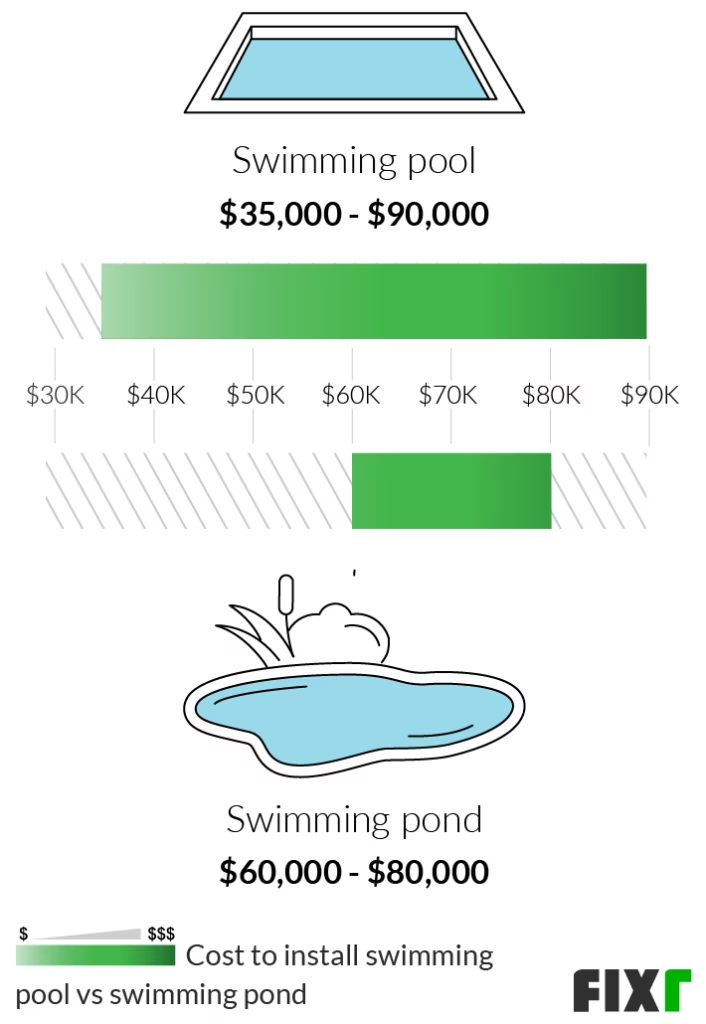When you’re considering a new swimming option for your home, it’s important to think about the benefits of both swim ponds and traditional swimming pools. Each choice has its unique characteristics, costs, and maintenance requirements that can heavily influence your decision. It’s essential to choose a space that not only enhances your home’s aesthetics but also fits your lifestyle, budget, and environmental values. This guide provides a thorough comparison of swim ponds and traditional pools, focusing on installation costs, ongoing care, environmental impacts, visual appeal, and biodiversity.
Which Costs More? A Side-by-Side Cost Analysis for Swim Ponds and Traditional Pools
Understanding the financial implications of each option is an essential part of your decision-making process. The initial installation costs for swim ponds typically range from $75,000 to $150,000, depending on size and design complexity. For smaller swim ponds, measuring around 10 x 15 feet, you can expect to pay between $65,000 and $75,000.
In contrast, traditional pools offer more straightforward pricing. An average vinyl pool costs approximately $37,000, while a concrete option is around $60,000. It’s apparent that traditional pools carry a significantly lower upfront cost.
However, long-term maintenance is where the two diverge significantly. Annual upkeep for natural swim ponds might cost you about $500 less than maintaining traditional pools. Maintenance for traditional pools usually ranges from $350 to $1,050 each year, primarily due to the costs associated with chemicals and treatments. Natural swim ponds leverage their self-sustaining processes, reducing ongoing chemical needs. While swim ponds require a higher initial investment, their long-term financial benefits can make them a more economical choice in the long run.
Description: Cost breakdown analytics graphic comparing installation and maintenance costs of natural swim ponds versus traditional swimming pools (Source: Fixr)
Is Maintenance a Breeze? Comparing Care Needs for Swim Ponds and Pools
Maintenance requirements vary greatly between swim ponds and traditional pools. Swim ponds are designed to work with the local ecosystem, requiring much less intensive maintenance. Utilizing natural filtration systems, these ponds keep water clear and healthy with minimal human intervention, allowing you to enjoy the space rather than spend hours maintaining it.
Traditional pools, in contrast, are more labor-intensive. Regular testing of water chemical levels and the addition of chlorine and other chemicals are necessary to maintain clarity and hygiene. This can increase both your costs and the amount of time you need to invest in upkeep.
In summary, while traditional pools can provide immediate cleanliness through chemical treatments, swim ponds take advantage of natural processes, letting you enjoy the water without the ongoing hassle of maintenance. For many homeowners, this simplicity is indeed a compelling factor in their overall choice.
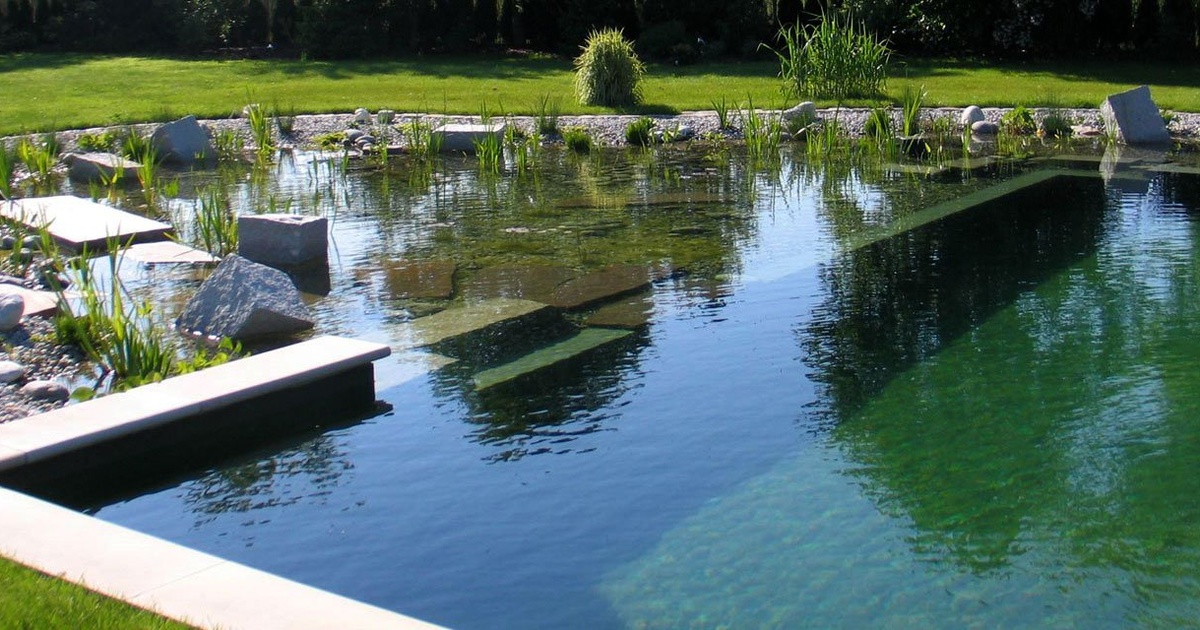
Description: Visual comparison highlighting maintenance tasks required for traditional pools compared to natural swim ponds (Source: EcoHome)
How Do They Impact Our Environment? The Eco-Factor of Swim Ponds vs Pools
If environmental considerations are a priority for you, swim ponds have distinct advantages over traditional swimming pools. Traditional pools consume large amounts of water and rely heavily on chemicals like chlorine. Research shows that the average traditional pool can waste about 55,000 gallons of water annually. The chemical runoff from these pools can negatively affect local ecosystems, impacting both water quality and wildlife.
In contrast, natural swim ponds use significantly less water—up to 50% less than traditional pools. They harness rainwater and feature plant filtration systems that naturally cleanse the water without needing chemical intervention. This approach not only conserves water but also promotes biodiversity within the environment.
As trends shift towards more eco-friendly landscaping solutions, opting for a swim pond can enhance your property’s ecological appeal while supporting local plants and animals. Choosing a swim pond connects you to nature and allows you to promote environmental sustainability.

Description: Infographic illustrating water usage statistics for traditional swimming pools and swim ponds (Source: ResearchGate)
Aesthetics Matter: Which Pool Style Adds More Value to Your Home?
The aesthetics of your home play a critical role in your pool choice. Swim ponds, with their organic appeal, can greatly enhance the visual attractiveness of your yard, providing a peaceful and natural swimming experience. This can create a striking focal point in your outdoor area, complementing the scenery and enhancing your property’s value.
While traditional swimming pools can also be visually appealing, their look is often more manufactured. On average, homes with traditional pools experience a property value increase of around 8%. However, swim ponds are increasingly recognized for their tranquil and environmentally friendly aesthetics.
Importantly, how you integrate your chosen pool type into your landscape design is vital. For instance, landscaping around a swim pond can amplify its natural beauty and may even draw in local wildlife, making your backyard not just an attractive feature but also a captivating ecosystem.
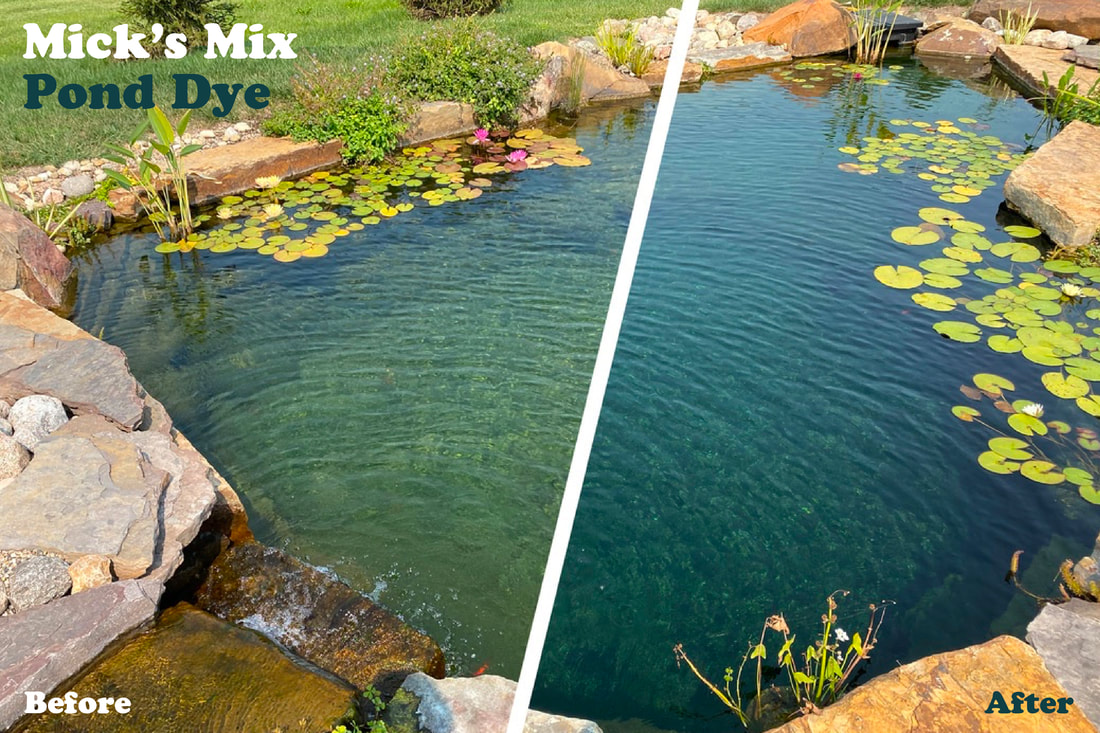
Description: A before-and-after image showcasing the aesthetic transformation produced by a natural swim pond versus a traditional pool (Source: Total Habitat)
Attracting Nature: Do Swim Ponds Bring in More Wildlife and Biodiversity?
One compelling reason to consider a swim pond is its potential to promote local biodiversity. These ponds act as thriving ecosystems, providing habitats for various plant species and wildlife, including frogs, dragonflies, and beneficial insects. This natural richness creates an engaging environment that traditional pools, often devoid of life due to chemical treatments, cannot replicate.
Traditional pools deter wildlife due to the presence of harsh chemicals. As such, your efforts to create a lush, inviting outdoor space may fall short if you opt for a traditional pool.
Choosing a swim pond not only allows for enjoyable swimming but also connects you closely to the natural world. You’ll be able to witness the beauty of local wildlife and the changing seasons in your own yard.

Description: A vibrant image showing wildlife thriving in a swim pond, contrasting with traditional pool landscapes (Source: Clearwater Creations)
Navigating Legal Waters: Zoning and Permit Issues for Swim Ponds and Pools
Before diving into any installation project, it’s important to understand the legal requirements that can affect you. Both swim ponds and traditional pools must comply with local zoning laws, which set rules regarding size, placement, and design. These regulations can vary significantly between states and local jurisdictions.
Interestingly, swim ponds may often encounter fewer permitting challenges due to their classification as “natural features.” While traditional pools generally require explicit building and safety permits, the eco-friendly nature of swim ponds can simplify compliance, making them an attractive choice for potential homeowners.
It’s prudent to connect with your local zoning office for specific requirements and regulations. This research will help you avoid any legal complications down the line.
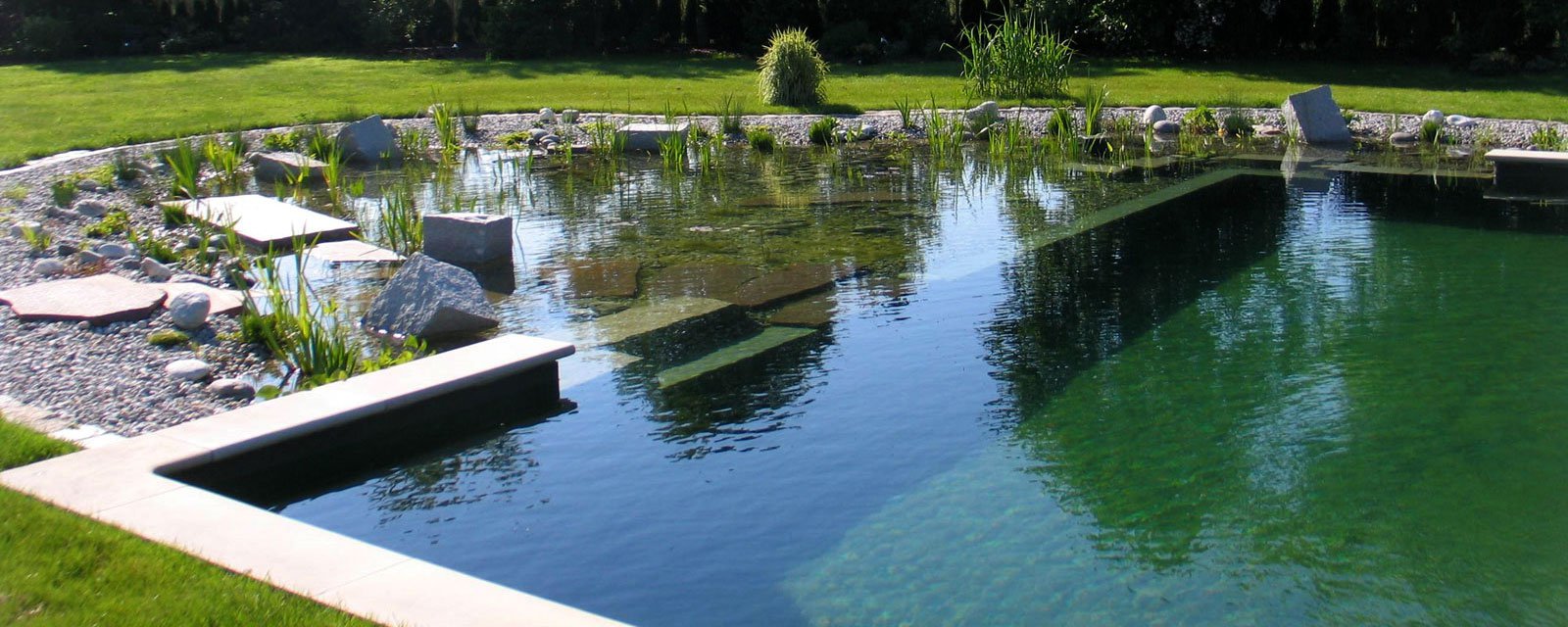
Description: A flowchart depicting the zoning regulations and permit requirements for both swim ponds and traditional swimming pools (Source: EcoHome)
Stay Safe and Sound: Health Factors in Swim Ponds vs Traditional Pools
When considering health and safety, water quality is a paramount concern for both swimming options. Traditional pools often rely on chemical treatments for disinfection, which can pose health risks if not carefully managed. In contrast, swim ponds utilize natural filtration methods that present less risk of chemical exposure.
Research indicates that well-managed swim ponds can meet health standards effectively, though they still require routine monitoring to ensure water quality is maintained. This organic approach can foster a more wholesome swimming experience, while both pool types necessitate vigilance concerning water management.
Ultimately, while aesthetics and convenience are critical factors in your choice, the overall health implications for you and your family deserve careful consideration.
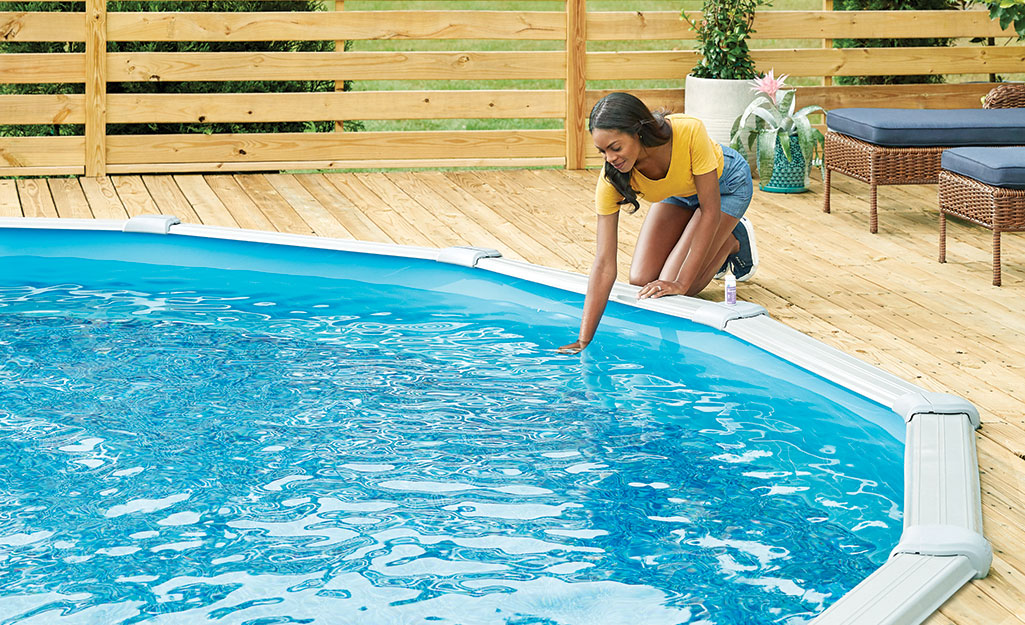
Description: An informative image demonstrating the methods for testing water quality in swimming pools compared to ponds (Source: Home Depot)
In conclusion, the choice between a swim pond and a traditional pool hinges on your personal preferences, lifestyle, aesthetic values, and environmental considerations. While traditional pools may offer lower initial costs and a simpler installation process, swim ponds provide significant long-term benefits that include reduced maintenance, aesthetic appeal, and ecological advantages. Carefully weigh these factors as you make your decision, aiming for an outdoor space that enriches your home life and aligns with your values as a homeowner.

